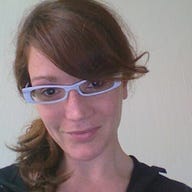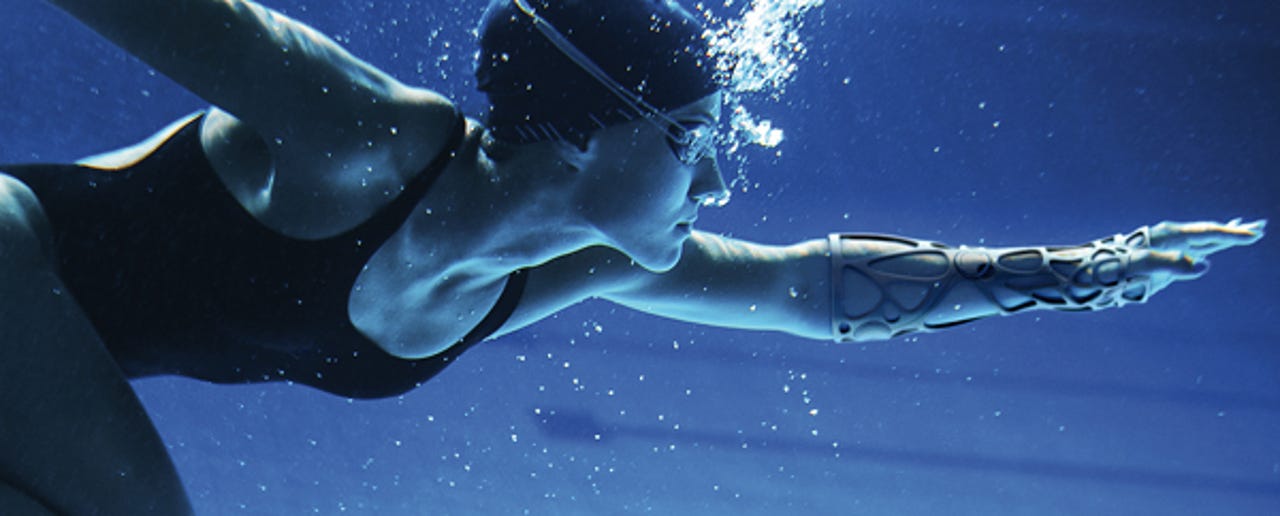How an Apple iPad combined with 3D printing can help mend broken bones


Xkelet says its 3D printed splint for fractures reduces muscle loss, peeling, and itching, and allows the patient to bathe.
Five years ago, Ricardo Veiga broke his tibia in a motorcycle accident. While he was experiencing the drawbacks of the ubiquitous plaster cast, he decided there just had to be a way of improving and personalizing the methods used to keep broken limbs immobile while they healed.
During research conducted with Jordi Tura, Veiga came across a paper from a New Zealand student who had designed a mesh structure that overcame many of the drawbacks of conventional orthopedic casts.
Using that concept, they decided to create a prototype and a company to market the eventual product, which they christened Xkelet, a 3D-printed splint for helping heal broken bones.
Tura is now the company's CEO. He says the product, which has received certification from the EU and approval from the European Medicines Agency, promotes the healing process without causing allergic reactions or other unexpected complications.
It also avoids muscle loss, peeling, and itching, and allows the patient to bathe and wear ordinary clothes without any issues. Xkelet is scheduled to go to market in early 2017.
"We won't take any risks concerning regulations. We'll wait to have all the approvals," Xkelet CEO Tura says.
Meanwhile, the self-financed, Girona-based startup is working on improving the product, which is currently being tested for arm fractures, but may eventually be suitable for 80 percent of the most common injuries, including those to the wrist, elbow, arm, leg, knee, and ankle.
To capture the correct dimensions, the doctor will first scan the affected area using an iPad and then send the image to the 3D printing lab to get the personalized splint made up for the patient, who can choose its color and external design.
Then, the splint is sent back to the doctor two or three days later. According to physician and physiotherapist Dr Ramon Gassó, that interval is desirable because sometimes temporary splints or compressive bandages are worn for a few days to allow any swelling to ease, after which the longer-term Xkelet cast can provide the best fit.
Rather than use a prototyping printer, Xkelet has its splints printed in Belgium using a 3D production machine, which can turn out up to 9,600 pieces a year.
It's because the splints are printed out in accordance with biocompatibility and hypoallergenic ISO standards that Xkelet has been able to obtain approval from the European Medicines Agency. Tura sees that approval as a crucial advantage that lets his business stand out from the competition.
"Xkelet also has a patented locking system and changeable openings. Moreover, our splint only weighs 150 grams and is fully customizable," Tura says.
However, he argues that the knowhow and core business of the company is not even the splint itself but the software that allows it to create the 3D outputs.
"What we intend to offer is a tool for healthcare professionals, who cannot be replaced," he says.
For the moment, they are only targeting professionals working in private hospitals or private insurance companies because the price of the individual splint is about €400 ($445), which could be an obstacle for the public health system in Spain. Conventional plaster casts remain much cheaper.
Dr Gassó says the Xkelet splint may have many important advantages in comparison to traditional bracing options, such as its ability to avoid the usual side-effects of keeping a limb immobilized.
"It also might allow for faster recovery, but it will probably not work for everyone and all cases," he says.
Yet, the invention has gained unexpected attention this summer after actor Ashton Kutcher published a video about the product on Facebook.
"We had a million views in 18 hours," Tura says. "Since then, a big company has contacted us for distribution in the US."
It's a development that could help to expand the company's position dramatically.
"For the moment, we're still in conversations. The important thing is that we offer a differentiated solution," Tura says.